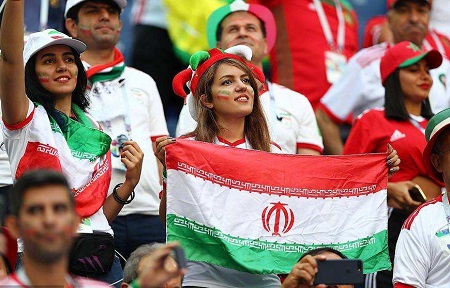
AP的复习历来是宜早不宜迟,因此本文将以国家为单位,为大家汇总AP比较政府与政治的考点,希望能为你明年大考的AP理想分助一臂之力。

AP比较政府与政治考试范围
国家:
英国 Great Britain
墨西哥 Mexico
俄罗斯 Russia
伊朗 Iran
中国 China
尼日利亚 Nigeria
涉及到的话题:
1. 比较政府与政治概论 Introduction to Comparative Politics(选择题出现)
2.主权、权力和国家力量 Sovereignty, Authority and Power(自由问答题出现)
3. 政治组织 Political Institution(自由问答题出现)
4. 公民、社会和国家 Citizens, Society and the State(自由问答题出现)
5. 政治和经济变化 Political and Economic Change(自由问答题出现)
6. 公共政策 Public Policy(自由问答题出现)
1
英国
1. 英国人文地理概况 Demography 和基本政治指标 political indicators(统治能力指数 Governance 0.79,人文发展 Human Development 0.86,民主 Democracy 第16位,和平指数Peace第29位,贪腐指数Corruption 第18位)
2. 卡梅伦政府的紧缩财政政策 Strict economic austerity polities of David Cameron administration
3. 英国的政体 Regime(英格兰、苏格兰、威尔士和北爱尔兰)、社会阶层 Social class、宗教 Religion、种族移民 Race and Immigration 和经济走向 Economic trend。
4. 英国国家的形成 Evolution of the British State
5. 英国国民的集体共识 The Collectivist Consensus
6. 英国自二战结束后的历任首相,重点关注这几位:艾德礼 Attlee,丘吉尔 Churchill,撒切尔 Thatcher,布莱尔Blair,布朗Brown,卡梅伦 Cameron 执政时期的内政外交和公共政策。尤其是撒切尔的「保守主义」That cherite Conservatism、布莱尔的「第三条道路」Blair’s Third Way。
7. 英国的政治文化 Political culture 和公民文化 Civic Culture
8. 英国的政治参与 Political Participation:保守党 The Conservative 的历史背景 historical root、撒切尔主义 Thatcherism、卡梅伦的保守党 Cameron’s Conservatives;工党 The Labor 的历史背景 historical root、新工党主义 New Labor、米利班德Miliband;自由民主党 Liberal Democrats 的历史背景 historical root 和现任领袖克莱格 Clegg;小众党派苏格兰国家党 Scottish National Party (SDP), 绿党 Greens, 威尔士党 Plaid Cymru。
9. 英国的选举 British Electorate 和利益团体 Interest Group
10.英国和美国政体的比较 Similarities and differences in the British and American States
11.英国君主立宪制 Constitutional Monarchy、两院制 bicameral system 和政党政府 Party Government
12.英国下议院 The House of Commons、公务员制度 Bureaucratic system和宪政改革 Constitutional reform
13.英国公共政策:外交政策 Foreign Policy 和经济政策 EconomicPolicy。重点关注撒切尔 Thatcher、布莱尔 Blair和卡梅伦联合政府时代 Cameron and the Coalition Government
14.英国的外交政策 Foreign policy:欧洲 Europe、伊拉克 Iraq、阿富汗 Afghanistan
15.英国的媒体 Media 和公共舆论 Press
2
俄罗斯
1. 俄罗斯人文地理概况 Demography 和基本政治指标 political indicators(统治能力 Governance 0.58,人文发展 Human Development 0.16,民主 Democracy 第117位,和平指数 Peace 第153位,贪腐指数 Corruption 第143位)
2. 普京和梅德韦杰夫的统治 The ruling of Putin and Medvedev
3. 俄罗斯的地理、多元、贫穷、老年化和环境问题 Geography, diversity, poverty, aging and environment problem inRussia
4. 俄罗斯联邦的形成 The evolution of the Russian state
5. 列宁的苏维埃革命和斯大林的恐怖政治 Lenin’s Soviet Revolution and Stalin’s Reign of Terror
6. 斯大林的工业化、大清洗和外交政策 Industrialization, the Purges and foreign policy under Stalin
7. 赫鲁晓夫、勃列日涅夫和政治的衰败 Khrushchev, Brezhnev, and the politics of decline
8. 苏联解体和戈尔巴乔夫的统治 The collapse of the Soviet State and Gorbachev years
9. 苏联社会开放、民主化进程、政治经济重建和外交政策 Glasnost, democratization, Perestroika and foreign policy
10. 俄罗斯联邦的经济下滑、叶利钦时代和普京时代的稳定 Economic decline, Yeltsin Era and the stability of Putin’s ruling
11. 俄罗斯的政治文化和政治参与 Political culture and participation 政党和选举:统一俄罗斯党、共产党、自由民主党和公义俄罗斯党 Parties and elections in Russia: United Russia, Communists, LiberalDemocrats and Just Russia
12. 俄罗斯的公民文化:非政府组织、示威和不满 Civil society in Russia: NGOs, protest and dissents
13. 俄罗斯的国家杜马和总统制 Duma and presidency in Russia
14. 俄罗斯的寡头制经济 Oligarchy in Russia
15. 俄罗斯的官僚制和司法制度 The bureaucracy and judiciary in Russia
16. 俄罗斯的联邦制和军事力量 The Federation and military in Russia
17. 俄罗斯的公共政策:经济的私有化和对外政策的强硬 Public policy in Russia: privatization and tough foreign policy
18. 俄罗斯的媒体 Media 和公共舆论 Press
3
中国
1. 中国人文地理概况 Demography 和基本政治指标 political indicators(统治能力 Governance 0.59,人文发展Human Development 0.69,民主 Democracy 第141位,和平指数 Peace 第89位,贪腐指数 Corruption 第75位)
2. 习近平执政的中国共产党 Communist China Party under President Xi
3. 汉族为主体、维吾尔族藏族等少数民族的中国 Relative homogeneity in China
4. 中国的社会和经济状况 Social and economic condition in China
5. 中国历史的发展 The evolution of the Chinese state
6. 辛亥革命、国民政府、抗战和内战 1911 Revolution, KMT government, anti-Japanese War and Civil War
7. 大跃进和文化大革命 Great Leap Forward and Cultural Revolution
8. 改革开放和威权主义政府 pen-door policy and totalitarian government
9. 中国的政治文化:集体主义、斗争和激进、平均主义和平民主义、自给自足 Political culture in China: collectivism, struggle and activism, egalitarianismand populism, self-reliance
10. 中国的政治参与:自上而下和自下而上的参与China’s political participation: top-down and bottom-up participation
11. 中国的政党政治:中国共产党的民主集中制和决策体系Party politics in China: democratic centralism and decision-makingsystem
12. 中国碎片化的威权主义 Fragmented authoritarianism in China
13. 中国政治的特点:实用主义和党校人才培养 China’s characteristics in politics: pragmatism and party schools
14. 中国的公共政策:经济上而非政治的改革 Perestroika without Glasnost in China
15. 中国的农业和商业 Agriculture and business in China
16. 中国的国有企业、人际关系、财富分配和脆弱的环境 State-owned enterprises, Guanxi, wealth allocation and fragile environmentin China
17. 毛时代和改革开放后中国的外交政策 Maoist foreign policy and new policy in China
18. 中国的媒体 Media 和公共舆论 Press
4
印度
1. 印度人文地理概况 Demography 和基本政治指标 political indicators(统治能力 Governance 0.54,人文发展 Human Development 0.58,民主Democracy 第39位,和平指数Peace第142位,贪腐指数Corruption 第95位)
2. 印度的贫富差距现状 India’s poverty and wealth
3. 印度的多元性、种族、阶级和宗教 Diversity, caste, class and religion in India
4. 印度的语言、民主、政治稳定及变化(重点关注孟加拉邦、古吉拉特邦、马拉地邦、旁遮普邦、泰米尔邦、泰卢固邦、乌尔都邦) Language, democracy, political stability and change in India:Bengal, Gujarat, Marashtra, Punjab, Tamil Nadu, Andhra Pradesh
5. 印度国家的形成:莫卧尔人和伊斯兰教、英国人的殖民统治 The evolution of India state: Mughals and Islam, Britishcolonialism
6. 印度的独立进程:尼赫鲁年代、英格拉甘地时代的分裂和集权 India’s independence: Nehru Era, centralization and fragmentationunder Indira Gandhi
7. 印度联合政府政治:国大党和印度民族主义党 Coalition politics in India: India National Congress and BJP
8. 印度的政治文化:身份认同、政治成功和现代化进程的挑战 India’s political cultures: identity, regime success, the challengein modernization
9. 印度的政治参与:国大党和甘地 India’s political participation: India National Congress and Gandhifamily
10. 印度的政治参与:印度民族主义党 Bharatiya Janata Party (BJP)
11. 印度的政治参与:印度共产党、印度马克思主义共产党、旁遮普邦锡克教党、查谟克什米尔国大党、泰卢固乡党 Communist Party of India (CPI), Communist Party of India-Marxist,Akali Dal in Punjab, National Conference in Jammu and Kashmir, Telegu Desam in AndhraPradesh
12. 印度的利益集团 Interest group in India
13. 印度的宪法、议会、官僚制和联邦制 Constitution, Parliament, Bureaucracy and federalism in India
14. 印度的村社暴力:旁遮普、克什米尔、古吉拉特和孟买 Punjab, Kashmir, Gujarat and Mumbai in India
15. 印度的经济模型、尼赫鲁模式、自由化和贫穷问题 Economy, Nehru pattern, liberation and poverty problem inIndia
16. 印度的媒体 Media 和公共舆论 Pres
5
伊朗
1. 伊朗人文地理概况 Demography 和基本政治指标 political indicators(统治能力 Governance 0.53,人文发展 Human Development 0.71,民主 Democracy 第159位,和平指数 Peace 第128位,贪腐指数Corruption 第120位)
2. 哈梅内伊、内贾德和鲁哈尼时代的伊朗 Iran under Khamenei, Ahmadinejad and Rouhani
3. 巴列维王朝和伊斯兰革命 Pahlavi Dynasty and Islamic Revolution
4. 什叶派、逊尼派和原教旨主义 Shiite, Sunni and Fundamentalism
5. 伊朗社会和经济状况 Social and economic condition in Iran
6. 波斯历史和伊斯兰化的伊朗 Persia history and Islamic Iran
7. 伊斯兰共和国:霍尔梅尼、拉夫桑贾尼、卡塔米、内贾德和鲁哈尼时代 Islamic Republic: Khomeini, Rafsanjani, Khatami, Ahmadinejad,Rouhani Era
8. 伊朗人和伊朗政治:绿色运动和政治示威 Iranian and Iran politics: Green Movement and political protest
9. 伊朗选举和阿亚图拉民主 Iran elections and the Ayatollahs Democracy
10. 伊朗宗教委员会和政党 The Guardian Council and political parties
11. 伊朗女性运动 Women’s movement in Iran
12. 伊朗的政体:最高领袖、非选举机构、选举机构和权利制衡 Supreme leader, non-elected institutions, elected institutions andthe balance of power
13. 伊朗的公共政策:两伊战争和经济窘况Iran’s public policy: war with Iraq and economic difficulties
14. 伊朗的媒体 Media 和公共舆论 Press

6
尼日利亚
1. 尼日利亚人文地理概况Demography和基本政治指标political indicators(统治能力Governance 0.49,人文发展Human Development 0.46,民主Democracy 第119位,和平指数Peace第146位,贪腐指数Corruption 第143位)
2. 尼日利亚现状:总统、人民民主党、博科哈林极端组织和货币贬值 Contemporary Nigeria: President Good-luck Jonathan, People’sDemocratic Party (PDP), Boko Haram and depreciation of naira
3. 尼日利亚的资源情况和贫穷问题 Resources and poverty in Nigeria
4. 尼日利亚的身份认同及零和政治:豪萨-富拉尼人,约鲁巴人,伊格博人 Identity and zero-sumpolitics in Nigeria: Hausa-Fulani, Yoruba, and Igbo
5. 尼日利亚国家的形成:跨大西洋奴隶贸易、殖民化过程和种族冲突 Atlantic slave trade, colonization and ethnic conflicts in the processof the evolution of the Nigerian State
6. 英国殖民前的尼日利亚:信仰伊斯兰教的豪萨-富拉尼人,信仰基督教的约鲁巴人 Islamic Hausa-Fulani andChristian Yoruba before the British colonization
7. 尼日利亚的独立进程:反殖民和反种族主义Anti-colonization and anti-racist in the process of theindependence of Nigeria
8. 尼日利亚共和国和第一次军事独裁管理 The First Republic and Military Rule I of Nigeria
9. 尼日利亚第二共和国和第二次军事独裁管理 The Second Republic and Military Rule II of Nigeria
10. 尼日利亚第三次军事独裁管理和第四共和国:阿巴查和奥巴桑约 The Fourth Republic and Military Rule III of Nigeria: Sani Abachaand Olusegun Obasanjo
11. 尼日利亚的政治文化和政治认同 Political culture and identity politics in Nigeria
12. 尼日利亚的金主政治和精英文化 The politics of patronage and elite culture in Nigeria
13.尼日利亚的政党和第四共和国的选举Political party and the election under the Fourth Republic
14. 尼日利亚的利益团体和非政府组织 Interest group and NGOs in Nigeria
15. 尼日利亚的种族冲突:尼日尔河三角洲解放运动和博科哈林极端组织 MEND and Boko Haram in Nigeria
16. 尼日利亚国情、政府职能和个人权力 Nigerian state, the branches of government and the personalizationof power
17. 尼日利亚的政体:联邦制、贪腐问题和军队 Federalism, corruption and military forces in Nigeria
18. 尼日利亚公共政策:民主化、第三共和国和第四共和国Nigeria’s public policy: democratization, the Third Republic and theFourth Republic
19. 尼日利亚的经济发展和结构 Economic development and structural adjustment in Nigeria
20. 尼日利亚的媒体Media和公共舆论Press
7
墨西哥
1. 墨西哥人文地理概况 Demography 和基本政治指标 political indicators(统治能力Governance 0.66,人文发展Human Development 0.77,民主Democracy 第50位,和平指数Peace第134位,贪腐指数Corruption 第100位)
2. 墨西哥的国民革命党和全国行动党 PRI (Institutional Revolutionary Party) and PAN (National ActionParty)
3. 墨西哥民族的多样性 The diversity of Mexican people
4. 墨西哥政治的发展历程:殖民主义、独立和1910年的革命 The process of Mexican politics:colonial era, independence and 1910 Revolution
5. 墨西哥1917年宪法和平民主义政党 Mexican’s constitution of1917 and Populist Party
6. 墨西哥左翼和右翼政党 The left wing and right wing party of Mexico
7. 墨西哥的政治文化一:浓重的爱国主义、反教会主义、对威权主义的容忍和独特的民主文化 Political culture in Mexico: strong sense of national identity, anticlericalism,toleration of authoritarian leadership and unique democratic culture
8. 墨西哥的政治文化二:金主关系、父权制社会文化和女性地位的进阶 Political culture in Mexico: patron-client relationship, patriarchyand the elevation of women’s status
9.墨西哥的亚文化:城乡差距、弱公民力量影响、忠诚于国民革命党和反国民革命党势力 Mexican’s subculture: the gap between the city and the suburb, weakcivil influence, supporters and opponents of PRI
10. 墨西哥的政治参与:右翼民主派、众议院的国民革命党、政治机器、政治欺诈、改革与失败 Mexican political participation: Democratic Rights, PRI in theChamber of Deputies, political machine, fraud, reform and defeat
11.墨西哥全国行动党和科萨达总统 PAN and Vicente Fox Quesada
12.墨西哥左翼民主革命党和平民主义主张 Left-wing PRD and populism
13.墨西哥的公民社会:女权主义、堕胎和同性恋权利 Civil society in Mexico:feminism, abortion and gay rights
14.墨西哥的政体、总统提名和任命原则 Regime, presidential nomination and appointmentprinciple
15. 墨西哥的内阁、官僚制和司法制度 The Cabinet, bureaucracyand judiciary system in Mexico
16. 墨西哥的国会和立法程序 Congress and the legislativeprocess in Mexico
17. 墨西哥的联邦制和贪腐问题 Federalism and corruptionin Mexico
18. 墨西哥经济问题:国债、经济下行和财政改革 Nationaldebt, economic downturn and fiscal reform in Mexico
19. 墨西哥经济措施:削减政府开销、开放市场和私有化进程 Spendingcut, opening up the economy and privatization in Mexico
20. 墨西哥国家石油公司和全国行动党的改革 PEMEX andreforms under the PAN
21. 美墨关系:非法移民和毒品问题 Immigration anddrugs issue in US-Mexican relations
22. 墨西哥的媒体 Media 和公共舆论 Press
以上就是今天对AP比较政府与政治考点的梳理。希望能对选了这门课的小伙伴有所帮助。虽然CB爸爸一直表示AP分数过低也不会影响美国大学申请,但为了以防万一,衷心建议大家还是不要出现3分以下的AP分数。如果你始终找不到适合自己的AP学习方法,点击报名【【AP冬季全程班】,海归一线AP导师领衔授课,查漏补缺,对症下药,帮助你提前锁定明年大考的AP理想分。

更多AP课程复习攻略点击七大2021AP物理2考点,要拿5的人已经会背诵全文了、
2019AP计算机科学A真题解析来了,明年大考的同学别忘刷。

学习有方法,成长看得见
筑梦牛剑/G5/常春藤
